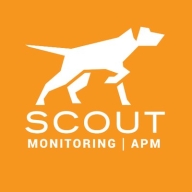OpenText SiteScope is an agentless monitoring program that tracks the availability and performance of distributed IT infrastructures such as servers, network devices and services, applications and application components, virtualization software, operating systems, and other IT enterprise components.
OpenText SiteScope is an autonomous hybrid IT monitoring system that can monitor more than 100 different types of IT components in real time, thanks to a lightweight and highly customizable remote access architecture.
With OpenText SiteScope, IT teams can get the data they need to keep on top of problems and eliminate bottlenecks before they become major concerns.
OpenText SiteScope can reduce total cost of ownership (TCO) by utilizing agentless technology, which eliminates the need to install and monitor agents on each box. Manual activities can be automated, and teams can save time and effort by using pre-packaged solution templates.
OpenText SiteScope Features
OpenText SiteScope has many valuable key features. Some of the most useful ones include:
-
Broad functionality built on expertise: OpenText SiteScope's architecture is scalable and supports a broad range of functions, including data collecting, alerting, event management, and reporting. Data is collected via remote access, which eliminates the need for agents to be deployed and maintained on monitored nodes. OpenText SiteScope connects to systems as a remote user via the central server, which supports JMX, SNMP, HTTP, SSH, NetBIOS, and WMI.
-
Monitors legacy and modern environments: OpenText SiteScope comes with more than 100 built-in monitors that track things like utilization, response time, use, and resource availability.
-
Cloud: You can monitor virtual servers and applications on Amazon Web Services (AWS). AWS-hosted applications can provide data to Amazon CloudWatch, which can be used for auto-scaling, reporting, and alerting.
-
Virtualization: OpenText SiteScope supports VMware, Microsoft, Citrix, and Oracle/Sun virtualization technologies. Monitor Docker clusters, nodes, containers, and workloads.
-
Flexibility with configuration: By adding or deleting specific monitors, you can adapt to dynamic changes in data center configuration.
-
Templates for solutions: The template database is based on best practices for monitoring complex application settings with the least amount of time and effort. The templates include built-in domain experience of specialized monitors, default metrics and thresholds, proactive testing, and best practices for a given application or monitoring component.
-
Notifications, alerts, and reports: Email, SNMP traps, HTTP post, and database alerts are all supported. Administrators receive alerts based on defined thresholds and schedules.
-
Flexibility in user management: Using LDAP or an internal management solution, define group-level permissions, construct user roles, and assign security groups depending on role. Extensive WS (Web Service)-based API that automates numerous management situations without the need for the SiteScope UI.
-
Integrations with SiteScope: OpenText SiteScope not only offers a number of benefits on its own, but it can also be linked with a number of OpenText and third-party solutions, giving teams the ability to properly integrate their IT operations center.
Scout APM is an application performance monitoring solution that simplifies the troubleshooting process by enabling developers to discover and repair performance problems before clients ever notice them. Scout APM uses a developer-based UI with real-time alerting and intuitive tracing logic to identify bottlenecks precisely to the source code. This helps to greatly reduce time and effort needed to debug code and results in greater productivity and improved outcomes.
Scout APM facilitates the ability of developers to break down, discover, and prioritize performance issues such as N+1 queries, latent database queries, memory bloat, and more, and accomplishes these results at a fraction of the cost. Scout APM monitors Elixir, Node.js, PHP, Python and Ruby.
Scout APM is built by developers, for developers.
Scout APM Features
-
24/7 monitoring: Continuous, consistent monitoring proactively keeps users apprised of any performance deviations. Intuitive dashboards allow users to deep-dive into specific requests, paths, users, and endpoints attached to any performance slowdowns or bloating.
-
Quick and easy analysis: Should a slowdown occur or an increased response time be discovered, users have an easy to use drag-and-drop option to simply and quickly analyze every endpoint and dissect any anomalies. Scout APM will pinpoint the precise user or endpoint(s) responsible for the problem.
-
Intuitive trace logic: Users are able to quickly deep-dive and discover slow requests based on average responses or any/all requests.
-
Crossfilter powerhouse: Crossfilter is a Scout APM feature that allows users to quickly discover similarities with any/all slow requests back to the user or endpoint.
-
Easily discover bottlenecks: With Scout APM, users can easily pinpoint bottlenecks to the exact source code without any additional custom instrumentation. The solution uses a production-safe profiler to fully examine users' custom codes.
-
Developer tracing: Scout APM uses backtraces that are embedded with git blame output so developers of the code can be quickly identified and contacted to resolve issues and concerns immediately.
-
Cost-effective: Scout APM is an open-source solution and offers many flexible pricing options to meet any size business, from small to enterprise level, including custom options. The cost per transaction decreases based on usage and works very efficiently with applications with very high throughput. Scout APM also offers a free trial period and encourages its usage so users can best understand and gauge the level of service needed and determine the best pricing plan to meet organizational needs. Scout APM is considered to be significantly cheaper than many other APM solutions in the marketplace today.
Reviews from Real Users
“The solution is stable. It's pretty easy to set up, especially if you have the knowledge base and/or you have a partner assist you. The product can scale. The processes are great. It helps with services and microservices. The product is great for many different industries, including energy, government, finance, and more. It's allowed our company to be more forward-thinking and to consider the future a bit more. ” - Antonio B., Regional Manager LatAm at Splunk



